
October 2013
Lately there has been a lot of talk about American Exceptionalism. Vladimir Putin started the conversation, then Senator McCain weighed in, and now it has come down to this... why not weigh in myself!
But first, as it is Halloween season, we offer the scary facial expressions of Bobby "Boris" Pickett as he performs his Monster Mash. After being passed on by major record labels, the song was recorded in 1962 by Garpax and went straight to #1 and sold a million copies. It charted again in the 1970s (twice) driven by "fifties" nostalgia such as Grease, Happy Days, and American Graffiti, and it is the best known Halloween song out there. A veteran of the Korean war and native of Somerville Massachusetts, Pickett died in 2005 at the age of 69.
Exceptionalism
While politicians posture about exceptionalism, engineers might be more capable of measuring it. Yes, the United States did some novel things in the 1940s, 1950s and 1960s. But what about more recently?
What are we number one in? We have the most super-rich people and they are so lovable that we show our respect by minimizing their tax burden, even though it is low hanging fruit to charge them a few bucks more for living like royalty while balancing the budget. You never know, you could be one of them someday, right? This get-rich fantasy is a key plank in the Republican platform, which doesn't seem to resonate with the majority of Americans these days.
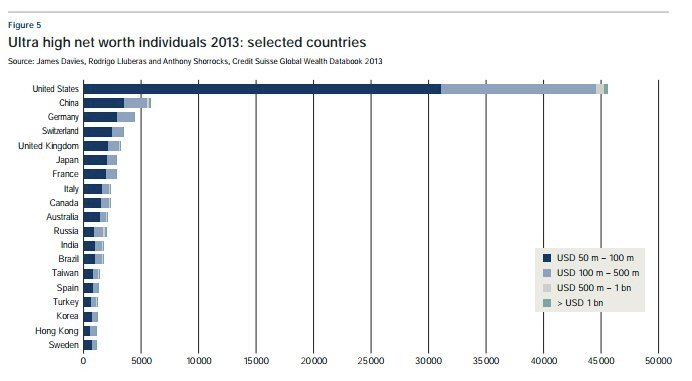
We are near the bottom in health when compared to 34 other "rich" countries. We have the highest costs for heath care, but are #38 in satisfaction. Check out comparative costs, of, say, bypass surgery.
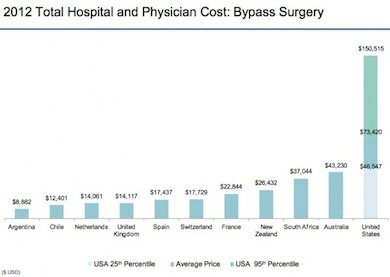
The U.S. is #1 in gun deaths, and we are told that this is because we don't properly screen for mental illness. Too bad we don't have national health care to pay for everyone to receive mental health screenings. Having 300 million guns laying around is just a coincidence, don't give it a second thought.
Does higher cost equal better medical treatment? Or make us happier? Denmark doesn't even crack the Top Ten of richest countries, but has been declared the happiest place on earth owing to gender equality, social programs, and culture. No one in the United States seems happy at the moment.
Being number 1 in Starbucks drivethoughs proves we are so lazy it is ridiculous. Would someone in Paris insist on being served coffee in their automobile? Does anyone in Germany care about how many cup-holders are in their next car? BMW got the message and added cup-holders to cars exported to the US back in 2010.
Enough of that palaver. No one on ever convinces anyone else about social sciences, and it's too hard to quantify. Let's look at some aerospace engineering efforts from the past 50 years where the United States proved its mediocrity.
Super-sonic transports
Back in the 1960s, it became a matter of national pride to be the first country to develop a super-sonic transport. There was no market-driven reason to have such a plane, so governments had to invest heavily in development programs. Our government pulled the plug on the Boeing 2707 before a prototype could fly.
The Russian TU-144 SST eventually numbered 16 aircraft, and entered service in 1977. Altogether these aircraft only made 55 commercial flights before they were pulled from service. The second prototype crashing at the 1973 Paris Air Show probably didn't win many customers. The target customers for SSTs being celebrities just didn't provide a big market base in a communist country.
The Concorde is the only SST "success" (technical, not commercial) and was truly an engineering marvel. Concorde was developed by a 1962 treaty between the United Kingdom and France which would have imposed heavy penalties for either partner if they backed out.
On 25 July 2000, a Concorde crashed in France and all one hundred passengers and nine crew members on board the flight died. A chunk of metal left behind by a Continental Airlines DC10 blew out a Concorde tire during takeoff, which led to a fuel tank explosion. Continental lawyered up and got out of any liability in the case, no surprise as the US has the most lawyers per capita in the world (and the richest lawyers in the world). The last commercial fight of the Concorde was about three years later, after successfully operating for 27 years.
Early Space Race
The US and the Russians would not have gotten to space without the help of German scientists. We got Werner Von Braun. Russia got Helmut Gröttrup.
Scott Carpenter died a few weeks ago. USA Today's print edition reported he was the second person to orbit the earth, a misrepresentation of history. They later updated the web site to say "second American". The first two people to orbit the earth were Russians. The second person to orbit the earth (and also the youngest, so far, at age 25) was Russian cosmonaut Gherman Titov on August 6, 1961.The first woman in space, only 26 years old, was Russian cosmonaut Valentina Teshkova way back on June 16, 1963.
United States Space Shuttle versus Soviet Buran
In the 1970s the United States developed the Space Shuttle that we are all familiar with. Soviet leaders decided there must be a military purpose for such a heavy lift capability (say, delivering a payload of nuclear weapons over North America), so they developed a shuttle of their own. The Buran was only flown once, without a crew, and successfully returned to earth and made a landing, before the Soviets lost interest in this expensive hobby.
Estimated cost of the US space shuttle program was $209B or $1.6B per flight. Two entire crews were lost (14 people). It never exceeded low-Earth orbit. Was the program worth it?
Nowadays, the only way to get to the International Space Station is on a Russian Soyuz rocket. Russia charges NASA only $63M per seat, and presumably makes a profit. Everybody wins!
Space stations
Let's take a look at some earlier space stations. SkyLab was an excellent stunt, it remains the biggest object ever lobbed into orbit. SkyLab weighed in at ~170,000 lbs. It orbited from 1973 to 1979. Damaged on launch, one of the solar arrays didn't deploy and SkyLab never ran at full power. Only three manned missions were made to it.
We knew well in advance that SkyLab would come crashing down, and it didn't disappoint. Bits of SkyLab showered over a 140 km radius near Perth Australia and NASA was fined for littering. I would like to point out that during the 1970s, the general feeling in the US was one of apathy, following Vietnam and Watergate. We didn't have any expectations that SkyLab would not suck.
Mir orbited from 1985 to 2001, and was assembled in orbit to a much greater mass and complexity than Skylab, at more than 260,000 lbs. The US Space Shuttle visited Mir several times, as we didn't have a US space station until the ISS was open for business. Mir was occupied a total of 12 and a half years.
Mir was by no means the first Soviet space station, they had already launched and occupied several Salyut and Almaz space stations in the 1960s and 1970.
The United States decided to try to improve their space station game when they revealed the plans for Space Station Freedom. Unfortunately, this idea that was put forth by Ronald Reagan was a failed project that took seven years to die. The International Space Station was the back-off answer, due to budget cuts.
Space station strandings
Sergei Krikolev is the world's most frequent flier to space. He has been awarded Hero of the Soviet Union, the Order of Lenin, the French title of L'Officier de la Légion d'Honneur, and Hero of Russia. He also has been awarded the NASA Space Flight Medal, for flying on the Space Shuttle twice. He has spent more than 803 days in space, more than any other human.
Because of the relativity of time, Krikalev has traveled into the future by 0.02 seconds. You can bet that there is some dirtbag American hedge fund manager out there thinking, "if I could do that, I could be rich!" They are already spending $300M to shave off 6 milliseconds. Don't ever think that your paltry assets are on equal footing with the greed-meisters of Wall Street.
Sergei Krikolev was on space station Mir in 1992 for six months, and some of that time was unintentional. On this flight, he drew unexpected international attention when it was reported that he was "stranded" in orbit when the Soviet Union broke up and Russia went through the 1991 coup attempt. Although Mr. Krikalev could have returned to Earth in an emergency, he was asked to give up his scheduled return seat to another astronaut and stay aboard Mir to keep it operating.
Newly independent Kazakhstan, where Soviet launching base was situated, eventually negotiated with Russia, and Krikolev was relieved of his position. By the time he made it back to his hometown, it had been renamed from Leningrad to Saint Petersburg.
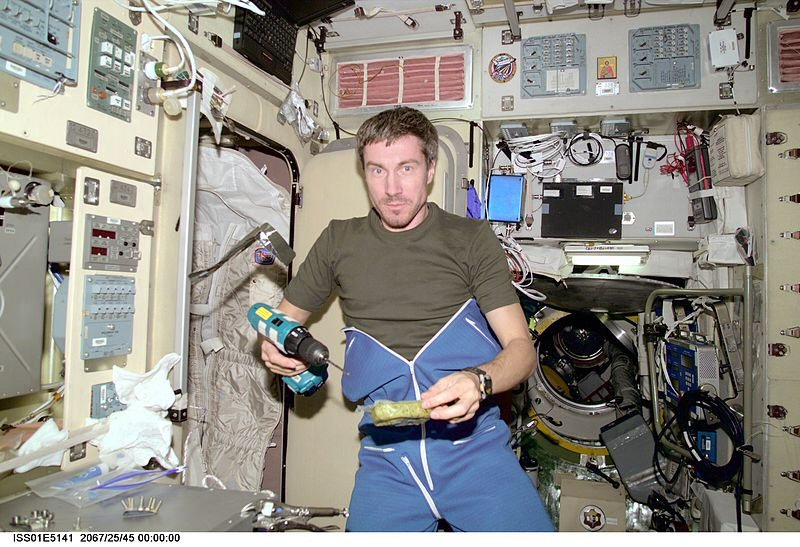
Sometime within the first few hours of the recent US Gooberment shutdown, the NASA web site went dark. Was this a political ploy? No, it is more like engineers and scientists flipping the bird to the government that is supposed to be funding them but aren't, thanks to goobers like Texas senator Ted Cruz.
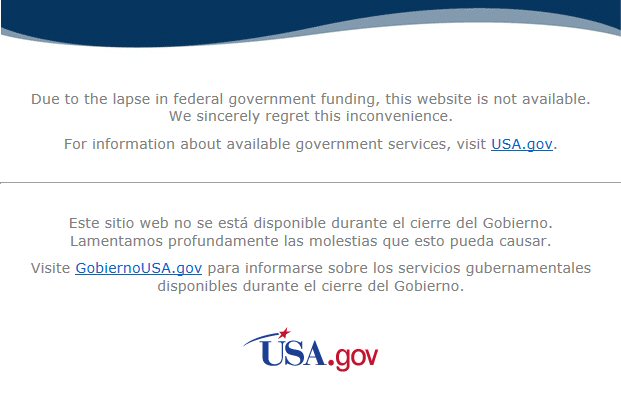
One of today's astronauts is Karen Nyberg, who was in the midst of a six month mission when the lights went out at NASA. She arguably has the longest hair to see micro-gravity, and even filmed a video on washing it. She was born in Minnesota, earned a BS in North Dakota and her PhD in Austin Texas.
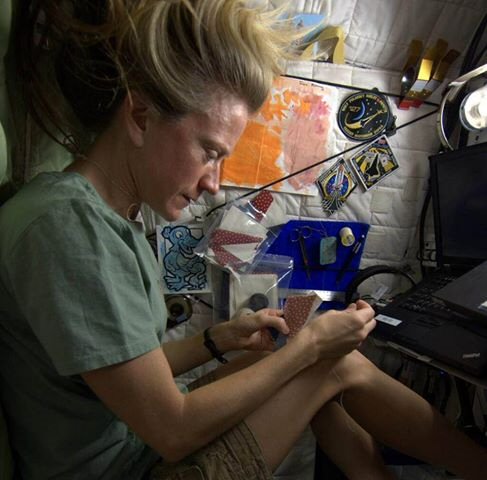
In her off hours Karen pursues social media, photography, sketching, and sewing. Below is the first space dinosaur, crafted by Karen from packaging from Russian food pods.
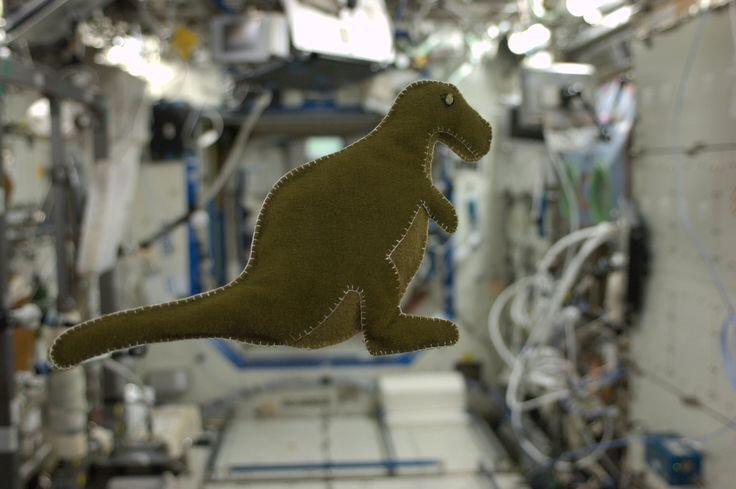
There are several ways to look at Space Dino, besides being the coolest critter to ever orbit the earth.
- Space Dino is a symbol of anti-science: 1/3 of Americans think that dinosaurs either didn't exist or were magically placed on the planet 6,000 years ago and were left behind by Noah and his magical boat ride.
- Space Dino is a symbol of the state of our manufacturing and wage inequality: we can make a stuffed dinosaur through a multi-100-billion dollar investment, but we can't make a stuffed toy competitively at home. Even if you could convince Americans to work for minimum wage of seven bucks an hour, the world's most polluted country will be able to beat your price even with overnight shipping.
Either way, whoever buys (or steals) the Space Dino rights from Karen or NASA will end up with a marketing fortune.
Space songs - which is most exceptional?
There are arguably only two songs about space that are major contributions to the arts. Neither was penned by an American.
Englishman David Bowie's Space Oddity was a surprise hit back in 1969. The song tells story of Major Tom, who gets caught up in the moment and goes off chasing stars.
Check out the original video he filmed, using a motorcycle helmet. Britain has only put one satellite into orbit on a British rocket.
Here's a new and extremely popular video by Space Station Commander Chris Hadfield, the first soprano astronaut, singing Space Oddity. The average American might say "awesome special effects, Dude! it looks like zero gravity!"
Did I mention that Chris Hadfield is Canadian?
German Peter Schilling's Major Tom dates back to 1983 and re-tells Bowie's story.
Titled Völlig losgelöst, (Completely Disconnected) a second version was sung auf Deutshe. Translation of the original (and much better) lyrics can be found on the internet. Which is the better version of the song? Let me put it dieser weg... Jeder weiss genau!
iframe width="560" height="315" src="https://www.youtube.com/embed/hkmcNOJoiVI" frameborder="0" allow="autoplay; encrypted-media" allowfullscreen>
What is the conclusion? What, did you think this was a Powerpoint presentation? In that case...
American Exceptionalism remains a persistent Yankee Doodle fantasy, but exceptional things often require exceptional government investments which are not likely to happen any time soon. Lately the only thing we are exceptional at is creating problems.
Take in an IEEE conference, look around and see how many Europeans and Asians are presenting state-of-the-art results in fields that were once taken for granted as dominated by the United States, for example, gallium nitride. Now let's all get over ourselves, and just get back to work (and education) in science and engineering.
Check out the Unknown Editor's amazing archives when you are looking for a way to screw off for a couple of hours or more!